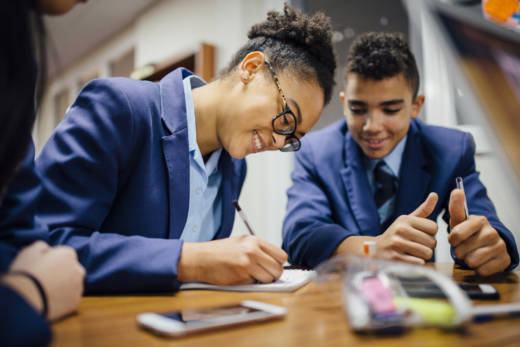When Mamie, a 12th grader, has a long-term project ahead of her, she starts by making a list of everything she needs to do to finish the assignment. At some point in the day, she takes out her calendar and writes out—by hand—what she needs to complete. “Every day I work on a different task or topic,” she said, crossing off the work when she’s through so she can see what’s remaining. She builds in extra time in case she’s underestimated how time-consuming a particular task might be and sets reminders to keep herself on schedule.
Like most successful students, she understands that she can’t float along and simply assume that she’ll get to the necessary work by accident. She recognizes that being purposeful about her assignments, by structuring her time and planning her schedule, is essential to tackling all her work—and allowing time for what she loves outside school. Decades of studies on planning support her instinctive approach: under the right circumstances, planning can enhance self-control, contribute to better school performance and help people achieve goals.
But according to a team of scholars at the University of Iowa who analyzed these studies, little research has been done to evaluate the effect of how people construct plans on the plan’s outcome—that is, how well the plan worked. The trio of investigators—Jooyoung Park, Fang-Chi Lu and William Hedgcock—conducted five separate studies with about 300 university students to find out.
They identified two principal methods of planning: the forward variety, where the planner pinpoints tasks closest chronologically to the present and moves forward toward the goal; and reverse planning, where the planner starts with the end goal and works backward from there. A reverse plan for a research paper, for example, would start with the due date, then determine when a first draft would have to be done, and before that when research would need to be completed, and so on, going backward to the present.
The researchers devised various studies with students who had real-life goals to grapple with. As a way to find out if planning order affected motivation, one study involving 44 undergraduates enrolled in a university course were divided into two groups and instructed to plan for an upcoming exam. Half planned forward, and the other backward, but all had to incorporate 15 identical activities related to exam preparation into their plan. The kinds of activities that might be included in exam preparation were “read chapter 7,” “read chapter 8,” “review articles,” “make a summary of notes,” and “review key concepts.”


